In the last ten years, audiophiles and music enthusiasts have developed a thing for antique record players and vinyl records. The popularity of these old devices has been rising steadily, as they keep getting collected every month. Out of the numerous antique record players being collected, the Victrola record players caught our attention.
Manufactured by the Victor Talking Machine Company, Victrola phonographs and gramophones rocked the music scene from the late 1800s to the 1920s. These music players have well-hidden sound horns and smooth features.
If you’re a novice collector less than 50 years old and living in the city with no prerequisite knowledge of recorded music history, chances are you’ve never heard of or seen Victrola Record players.
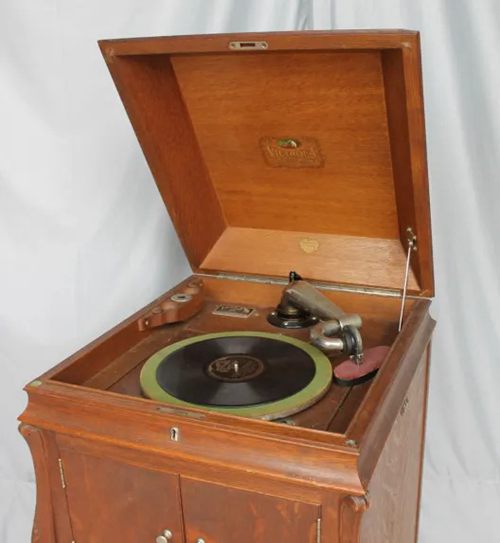
If you would love to know more about the Victrola record players, their manufacturers, history, and popular, most expensive, and rare Victrola record players, please keep reading.
Table of Contents
Victrola Record Player History
It won’t be right to tell the history of Victrola record players without mentioning the name of the first inventor of sound players, Thomas Edison. Edison (1847–1931) was a seasoned scientist recognized for his contributions to the motion picture camera, the lightbulb, and the phonograph.
The first phonograph was invented in 1877. This equipment could record and play multiple sounds using waxed cylinders. The sounds were produced by the vibrations of the sound waves against the metal needle at the top of the wax. Phonographs are significant pieces of history. Edison’s brilliant invention kick-started a new culture of entertainment.
As time progressed, new manufacturers came into the scene. These new companies, including Victor Talking Machine Company, further developed Edison’s technology. First, they proposed using flat discs rather than waxed cylinders; thereafter, they modified the size of the sound players to be smaller and compact.
Victrola record players embody a crucial period in the history of recorded music. The build of these old equipment brings out a sense of the past.
The dawn of the 20th century came with an ingenious way to play recorded sounds at homes, parties, restaurants, and clubs. Over the years, many passionate collectors have invested time in learning how to restore or repair original antique Victrola phonographs and gramophones.
The Victor Talking Machine Company, established in the 1880s, was the originator of the Victrola sound equipment. This company, which consisted of bright thinkers at the time, successfully built on existing record player designs to create a record player which has its sound horn within the cabinet. Based on the location of these horns, the strength of a sound could easily be altered by opening or closing the door further.
Production of antique Victrola phonographs lasted less than thirty years due to the increasing popularity of modern radios. However, following the halt in production, the Victor Talking Machine Company was subsequently acquired by the Radio Corporation of America (RCA). Together, these giant companies became titans in the music industry. What’s more, this merged company remains one of the dominators in the music industry.
The evolution of the Victrola record players began when Emile Berliner produced a flat phonograph record. This invention was mass-produced, unlike Edison’s design a decade before. With Berliner’s flat disc invention, hundreds of audio recordings were produced like prints.
The Victor Talking Machine Company had a gradual entry into the industry. It all began when Berliner asked a New Jersey shop owner, Eldridge Johnson, to develop and produce an affordable spring-wound motor for his record player. Berliner finally had to leave the U.S market for the Canadian market due to the endless stream of competition and limited capital. Soon after, Eldridge Johnson capitalized on Berliner’s patents to become a leading force in the business. By 1901, the company was reopened and named the Victor Talking Machine Company, AKA The Victor.
Using his experience from working with Berliner, Mr. Johnson had learned a lot about the smooth production of record players and its emerging market. In the first decade of the 1900s, most available phonographs were crude. They were sometimes capable of reliable performances but most times sounded rough.
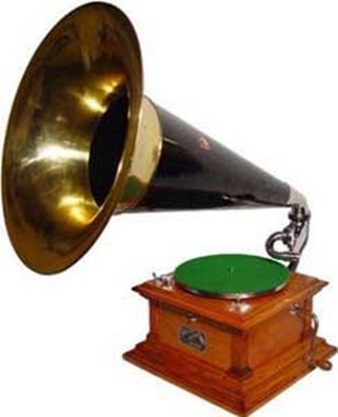
Adding A Logo and a New Name To The Brand
Eldridge Johnson immediately got to work by assessing the various opportunities to improve the record players and sales.
In the early weeks of operating alone, Johnson decided to aggressively advertise his record players on printed mediums like magazines and newspapers. He also adopted a distinctive trademark for his brand. Before 1901 ended, Johnson had started including a picture of the acclaimed “dog and phonograph,” alias Nipper, on all products being sent out.
In addition, he decided to change the business from Consolidated Talking Machine Company to The Victor Talking Machine Company in October 1901.
As the years progressed, Johnson’s staff grew by the numbers, and numerous features were added, removed, or improved on record players. For one, the record players became less noisy, a tapered tonearm was used, and better soundbox designs were adopted.
Thanks to the advertising campaign, Victor’s sales continued to increase. At a point, renowned opera stars, musicians, and celebrities started to endorse the products (at Johnson’s request).
By 1905, the Victrola was officially invented. This novel invention was the company’s way of creating a new and unique product that could set them apart from other phonograph manufacturers. Victor experimented with different designs to make the Victrola convenient and less bulky. He later settled on folding the horn downward in the large space beneath the turntable. Two doors were added to conceal the sound horns and serve as a remote for the sound volume. If the doors were opened, the sound would be loud; if they were closed, the sound would have been reduced. The more open the doors (volume controls) are, the higher the sound.
Another exciting feature was the turntable lid. This could be closed at will to reduce the surface noise from the played records. In addition, the large cabinet housing the sound horns had enough space to store records and other record player accessories. This exciting invention was patented and dubbed the Victor-Victrola in no time and doled out to interested customers for less than $300 (equivalent to almost $6,000 today). The first batch of Victrolas sold quickly, and Victor started producing the second batch.

The Victor Talking Machine Company made thousands of sales in the three decades it functioned. The invention of the radio gradually put a stop to the demand. By 1930, sales had totally dwindled. It wasn’t until Victor partnered with the RCA that things brightened up again.
How To Identify Antique Victrola Phonographs
Identifying antique Victrola record players is an easy process.
Check for the Serial and Model Numbers
The Victor Talking Machine Company thought ahead to assign each product a unique serial number. Hence, it’s not easy to identify them; it’s also easy to determine their year of manufacture.
Every phonograph made by the Victor Company has a unique metal data plate. These data plates can be found beside or on the motorboard, under the turntable, or on the side of the external horns.

The above are examples of Victor-Victrola dateplates.
For the plate on the left, the model is a VV-XI with serial number 836749. The initials VV is short for Victor-Victrola.
A model identification number, as well as a serial number, is always stamped on the bottom left and right of the data plate, respectively. Each model and design has its unique numbers. If you come across an “antique” with no data plate or no sign that the data plate was removed, the piece could be a replica. Some Victrolas manufactured in the 1920s have their tags beneath their turntables. You can lift the turntable to access this information. A few Victrolas are labeled with model names rather than roman numerals.
Once you locate the serial number, crosscheck the designations with a Victrola information page. One of these pages can be found here.
Other information on a dataplate includes the patent dates, copyright, and the trademark (a dog and a gramophone).
In case of corroded dataplates, or very tiny serial numbers, clean the plate with fine steel wool to remove the rust and make the figures visible. Don’t add too much pressure while doing this, as it could damage the plate. Use a microscope to make the small stamped numbers more visible.
Locate the Maker’s Mark
Some Victor-Victrola record players have inconsistent serialization. This unavoidable error occurred due to a disastrous fire in the factory in 1904.
When the company first began production, the phonographs were labeled with serial number “1”, which indicates they were produced in 1901, “2” for 1902, and “3” for 1903. So, when the fire damage was fixed, the factory decided to start labeling from “1” again. The numbers were reset again for unknown reasons in 1909. Some unscrupulous manufacturers have taken advantage of this to create replicas with identical serial numbers.
Due to this, it’s a good idea to confirm the Victor Talking Machine Company trademark; a dog listening to a gramophone. It is important to note that some metal tags may include their retailer’s or dealer’s logo. For example, some Victrolas have Lyon, Hudson’s, and Wurlitzer logos. These symbols do not indicate that they manufacture the product.
Check for a Paper License Sticker
Examine your Victrola record player in search of a License Sticker. This sticker is found chiefly on the bottom inside the wall or back of the equipment.
This sticker gives information about the patent and copyright dates. Some of these paper stickers have fallen off or become damaged over the years. If you’re lucky enough to find one in perfect condition, check the bottom left for the licensing date. Beware of new stickers that dealers could have reapplied to disguise replicas as authentic Victrola.
Confirm The Materials Used
Antique Victrola record players were produced from natural woods like oak. The finishing materials also varied.
Types and Popular Models of Antique Victrola Record Players
As mentioned earlier, antique victrola record players were produced from 1901 to late 1920s. People sometimes mistake the Victor phonograph with the Victrola record players. The distinct difference is that Victrolas have their sound horns within the cabinets, while Victors have external horns.
Types of Antique Victrola
Regular Victrola
These functioned manually with hand cranks and were manufactured before electricity became a thing. One of the rarest Victrola collections is the Pooley Flat top series. When these series were first released, it was unpopular and had little demand because they had a deep-set gramophone.
Orthophonic Victrola
This type of Victrola is also known as an “Electrola.” It was produced in the 1920s for a short period. It has an electric setup that imitates the mechanism of the hand cranks. At some point, the company manufactured hybrids of Electrola and Victrola. That is, the device could be powered with hand cranks and electricity.
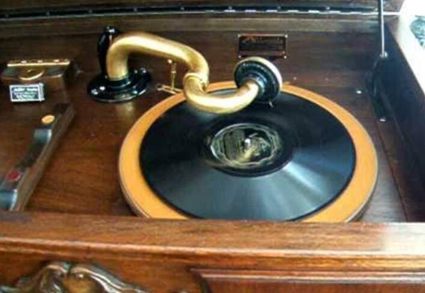
Popular Models of Antique Victrola Record Player
1. Victrola XI
Production Year: 1916
Price: $1,000
Source: eBay
This is one of the most collected Victrolas today. The design of this piece embodies the company’s acclaimed “floor style.”
2. Victrola XII
This was produced in 1909. It was the first tabletop model manufactured by the Victor Talking Machine Company.
3.VV-50 Victrola Portable Record Player
Production Year: 1920
Price: $500
Source: ebay
The VV-50 has a 78 RPM phonograph. The piece pictured above has undergone some minor restorations to correct some cosmetic and patina damage that came with age.
4. Victrola RCA Suitcase Record Player
Production Year: 1920s
Price: $200
Source: Etsy
This is another portable phonograph with dimensions 13.5″W X 17″H X 7″D. Very few pieces were manufactured. Hence it is very valuable. This piece is available on Etsy. Note that it is missing its crank.
Assessing the Value of Antique Victrola Record Players
Individual collectors have different perspectives on how to value antique Victrola record players. The guidelines we’ll dwell on for this assessment revolve around the condition and market value of the phonographs. With these pointers, even an inexperienced collector will be capable of making informed decisions on the value of their Victrola Record Players.
Assessing the Condition of The Victrola
All antique Victrola by Victor Talking Machine Company was created from 1901 to 1939, about 120 years ago. Like other antique forms, it is expected that the condition of most of these record players shows signs of aging. Sometimes the conditions of Victrola record players are affected by aging.
The value of an antique is directly dependent on its current condition. The more your antique Victrola phonographs appear new, the higher the price could be.
To determine the condition, you could hire an appraiser or do it independently with the next steps.
a.Determine the authenticity of the machine: this can be done by checking the serial and model numbers, hardware components, and the multiple mechanics within the cabinets.
- Confirm whether it is in original condition or has been restored (entirely or partially).
- If there is proof of restoration, ascertain the quality of materials used to restore the Victrola to its original condition
- If the record player is authentic, confirm all parts are still complete. Experts appraisers often recommend at this point that a judgemental comparison be carried out. This has to do with comparing a brand new Victrola to the machine being assessed.
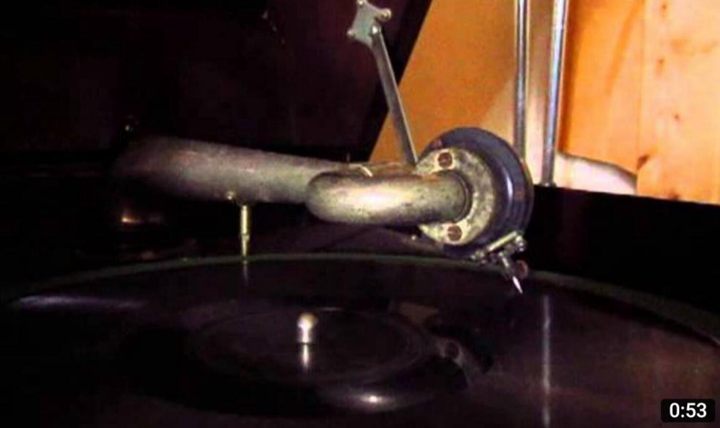
Determining Market Value
Once you are sure of the authenticity of the Victrola record player, you can begin the process of judging the market price or value. The most effective method of getting the accurate market value of an antique piece is through comparison.
You can compare prices through online auctions, eBay, estate sales, thrift markets, etc. Comparing these results will provide an excellent foundation to establish your antique’s worth.
Most times, appraised prices are lower than the collectors’ expectations. Only a few times is it higher.
The actual value of an antique Victrola phonograph depends on four major factors which are Rarity, Authenticity, Condition, and Completeness.
The rarity of Victrola models
To determine the rarity of a record player, you must be able to answer these questions.
- How many units of this model were initially manufactured?
- How many are still in existence at the moment?
- How many collectors are interested in it?
Rarity is a vital feature used in assessing the value of a recording machine. Note that rarity alone doesn’t determine the value. For example, the Victrola VV-107: The total units produced is about 1,007; it is one of the rarest models created. However, collectors do not rate it as they would other rare models. This is most likely due to its unattractive, plain features. Due to this reason, this model doesn’t fetch much in the current market.
Special Considerations
Some Victrola models have unique characteristics or features that make them more attractive or more functional than other models. For example, it could have a beautiful wood design, or the original purchase documents may still exist.
Victrolas, which are both rare and have distinctive finishes, are high atop the list of collectible record players. They are priced much higher than regular models. One of such unique designs is the VV-XVI model. This model has an excellent driftwood oak finish. This finish makes it sell for about twice the price of models with mahogany or golden oak finish.
Price Comparison
To get a realistic idea of a record player’s market price, we advise you to log into an online marketplace like eBay and run a filtered search on the model you’re working with. For instance, if you’re interested in knowing the market price of a Victrola XI, input the keyword into eBay’s search engine and use the “sold items” filter to streamline the results. If you go through the results, find an item in similar condition as yours to get an idea of the market price.
Don’t make the mistake of checking only the asking price, as most of this information is often inflated by the sellers. Focusing more on the average completed sales will tell a better story.
Tips to Care for Antique Victrola Record Players
Victrola record players are relics that require utmost care. Many people who are still using their record players can testify that the sound quality of these classics is way better than most of the cutting-edge new-tech record players.
Dust is the number one enemy of Victrola record players. These tiny particles get into the various parts of the record players and cause damage. Sometimes, even the smallest accumulation of dust can distort the sound.
Always clean every part of the machine, especially the parts where dust can hide. These special Ares include the stylus, turntable, tonearm, and cartridge.
Other tips include;
- Cleaning after each use.
- Wiping the stylus with a brush regularly.
- Avoid the use of moisture.
- Have a dust cover for covering the machine when it is not in use.
- Avoid using homemade cleaning solutions.
Where to buy and sell antique Victrola Record Players
The rise in popularity of antique Victrola record players has caused many collectors, thrift stores, and antique collectibles shops to stock different models of this phonograph. Asides from brick-and-mortar stores, you can also purchase these machines online.
Online marketplaces to check include:
- eBay
- Etsy
- Amazon
- 1stDibs
- Ruby Lane
- Craigslist
You can also consult this list of auction events here
There you have it!
The basic things you need to know about the antique victrola record player for your reading pleasure. As you’re preparing to take the first step to either sell or buy your first or nth victrola phonographs, you must understand that these machines do not move as fast as the other antiques.
Currently, the demand for these machines is relatively low, so we’ll suggest that you exercise patience until you find the best price for your devices. However, if you have a Victrola that is highly unusual and desirable, you may be lucky to make big bucks in no time.

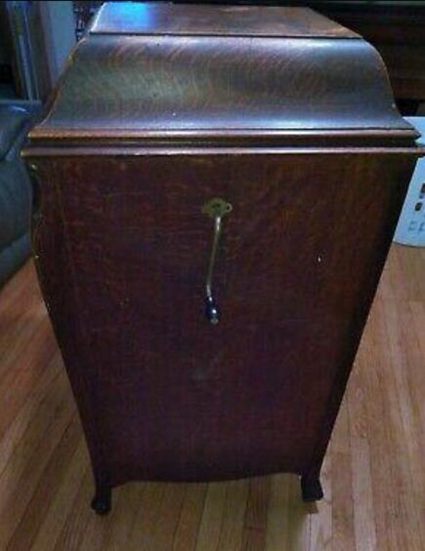
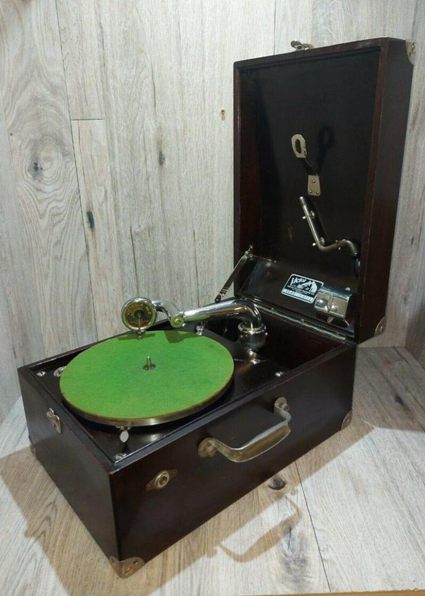
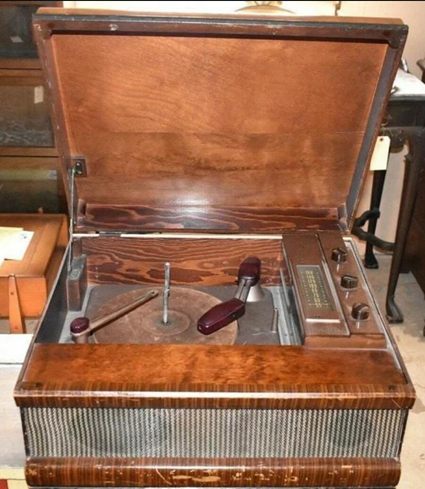






![Vintage Schwinn Bikes: [Types, Identification, and Values]](https://www.txantiquemall.com/wp-content/uploads/2022/05/5.-Schwinn-1967-Ramshorn-Fastback-Stingray-Sky-Blue-vtg-600x450.jpg)
